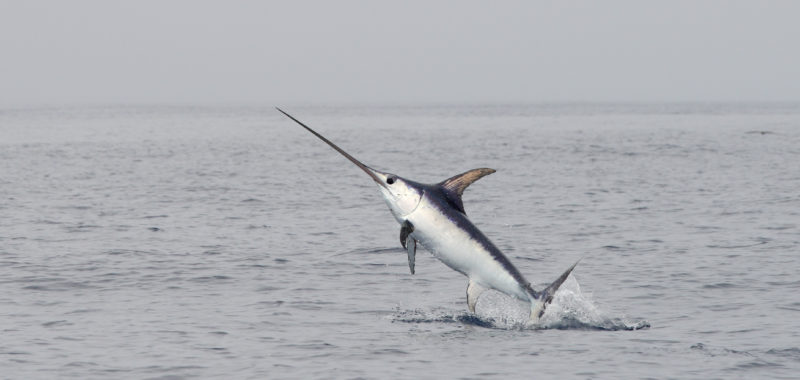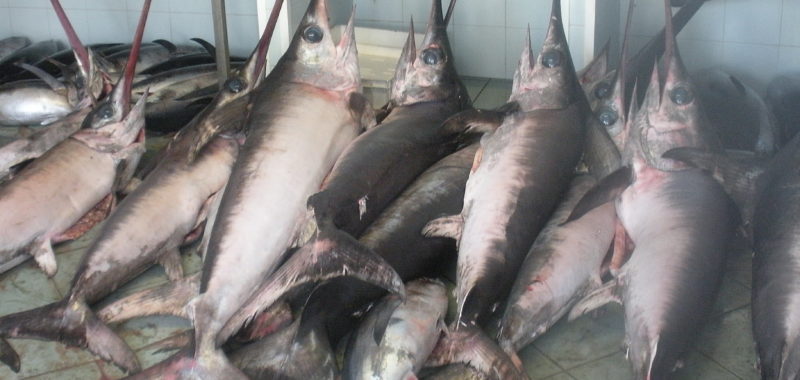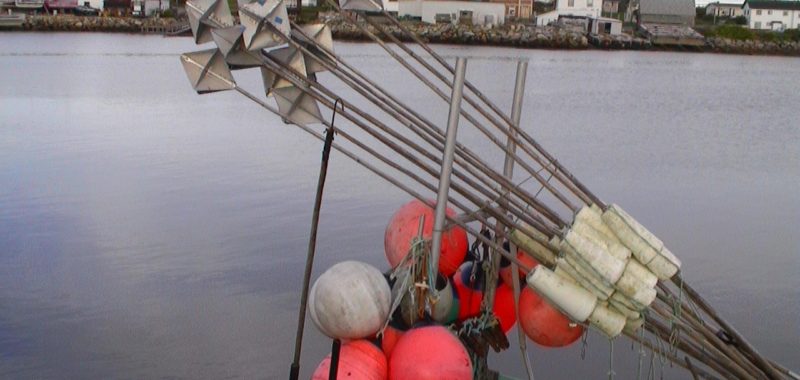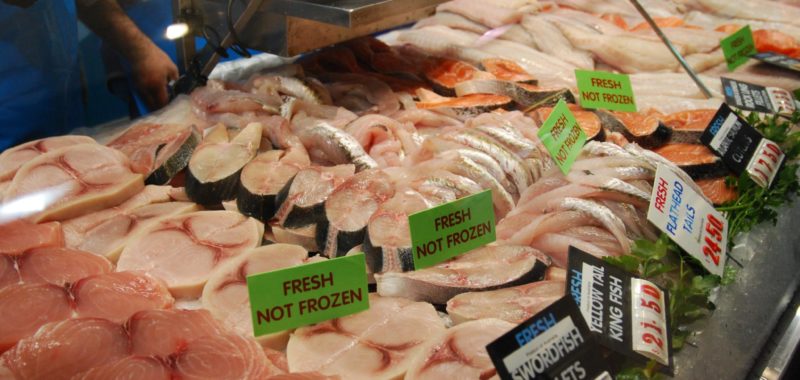Priority Species: Atlantic Swordfish
Scientific name: Xiphias gladius
DFO Stock Status: Healthy Zone (1/1 Stock)
COSEWIC Status: No COSEWIC assessment
Dive deeper into stock-specific status details.
The North Atlantic swordfish population is in the healthy zone, following a rebuilding plan implemented by the International Commission for the Conservation of Atlantic Tunas (ICCAT). However, there is still uncertainty about whether or not the stock is fully rebuilt.
The primary sustainability concern associated with swordfish is the bycatch of other species in the pelagic longline fishing gear. Pelagic longlines consist of a line floating near the surface stretching up to 60 km, with upwards of 1,500 baited hooks. While fishing for swordfish, the Canadian longline swordfish fishing fleet actually catches tens of thousands of sharks and hundreds of sea turtles which are released injured or dead at sea. Over 40 per cent of the total catch is unwanted bycatch of vulnerable and endangered species – including the Endangered porbeagle and mako sharks, Near Threatened blue sharks, Endangered loggerhead and leatherback sea turtles. The fishery does not have precautionary, science-based limits on how many of these other species they can hook while fishing for swordfish.
There is also concern for the number of seabirds, juvenile swordfish, and threatened tunas that may be caught in pelagic longline fishing gear. Fisheries observer coverage continues to be low at 10 per cent, and it is unclear if coverage is sufficient enough to understand the impact on all species.
Population: Continued precautionary management in quota setting is necessary.
Bycatch: For pelagic longline gear fishing fleets, Canada needs to set precautionary, science-based limits on all species caught in this fishery, even if species are not brought to shore. There should be a ban on all shore landings for the endangered porbeagle and overfished shortfin mako sharks. There should be strict catch limits for blue sharks, which are heavily fished and have an uncertain status. For loggerhead sea turtles, there should be a strict limit on how many can be hooked.
Fishing fleets need to report their catches in real time, and move away from areas where turtles are foraging. Fleets also need to invite research technicians on board their boats to fully understand the impact of their fishery on sea turtles and other vulnerable animals. At the same time, gear mitigation options should be tested and refined.
Habitat: N/A
Gear: More of the quota should be caught with low-impact fishing gear. Canada has a century-old, active harpoon fishery that catches one swordfish at a time, with no incidental catch, but that covers only ten per cent of the current swordfish quota.
Monitoring: There is a relatively low level of swordfish fisheries observer coverage, and no electronic or video monitoring on fishing fleets. Increased fleet observers and/or video monitoring should be implemented. A pilot project to explore these options will be announced following the release of a Canadian National Catch Monitoring Policy which is expected in 2018.
Markets: Efforts should focus on promoting the harpoon swordfish fishery in the market, and assessing impacts of the U.S. Seafood Import Monitoring Program (SIMP) regulations on this fishery. Harpoon swordfish are high quality, and more swordfish can be caught by harpoon if there is increased market demand recognizing this fishing method as a sustainable solution.
Related SeaChoice MSC submissions can be found here
EAC Press Release on Seafood Watch Ranking 2015
Common/Market Name
Atlantic Swordfish
Distribution
Throughout the North Atlantic
Harvest Method
Gear types: Pelagic longline, harpoon
Management Agency
Department of Fisheries and Oceans Canada (DFO): Maritimes Region and the International Commision for the Conservation of Atlantic Tunas (ICCAT)
Market Distribution
In 2015, over 80 per cent was exported to the United States (data from DFO and Statistics Canada).






